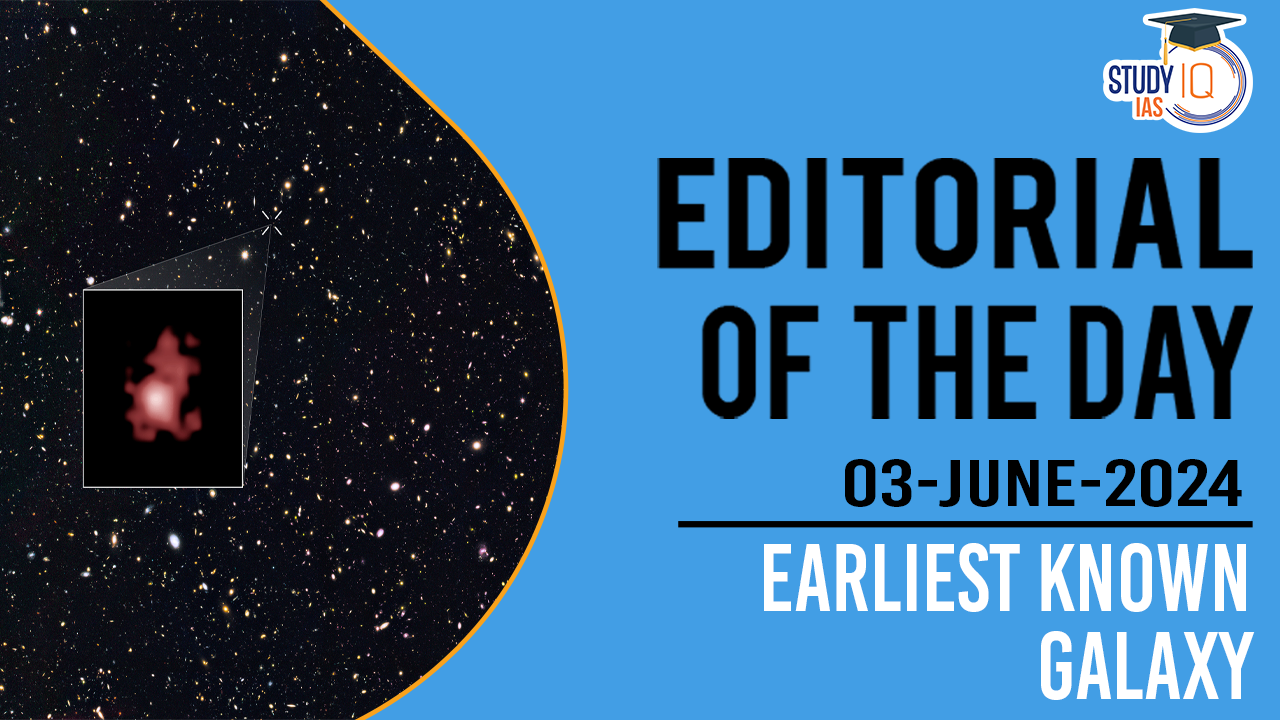Context: The James Webb Space Telescope (JWST) has recently identified a galaxy known as JADES-GS-z14-0, which is the oldest galaxy observed to date.
About the Earliest Known Galaxy
- This galaxy originated approximately 290 million years after the Big Bang, which occurred about 13.8 billion years ago.
- Astronomers determine the distance of galaxies like JADES-GS-z14-0 by measuring their redshift value, a technique based on the stretching of light wavelengths due to the expansion of the universe.
- The phenomenon known as redshift causes light to move toward the infrared part of the electromagnetic spectrum, indicating that the galaxy is moving away from us.
- The telescope is specifically equipped to study the significantly redshifted light from distant galaxies, making discoveries like JADES-GS-z14-0 possible.
- This finding allows astronomers to explore the “Cosmic Dawn“—a period marking the emergence of the earliest galaxies.
Why is the JADES-GS-z14-10 Galaxy So Bright?
- Hypothesis 1: Initially, it was thought that the brightness might be due to supermassive black holes consuming material, but this has been dismissed since the observed light is more diffused than expected from such activity.
- Hypothesis 2: It is speculated that these early galaxies contain more stars than previously believed.
- Hypothesis 3: Another theory suggests that these galaxies house stars that are inherently brighter than those found in later periods.
| About the Telescope |
| About: It is an orbiting infrared observatory that will complement and extend the discoveries of the Hubble Space Telescope, with longer wavelength coverage and greatly improved sensitivity.
|



 Bharat Bandh 9 July 2025: Over 25 Crore ...
Bharat Bandh 9 July 2025: Over 25 Crore ...
 Sukhoi Su-57: Will India Choose Russia�...
Sukhoi Su-57: Will India Choose Russia�...
 World Bioproduct Day 2025: Date, Theme, ...
World Bioproduct Day 2025: Date, Theme, ...





















